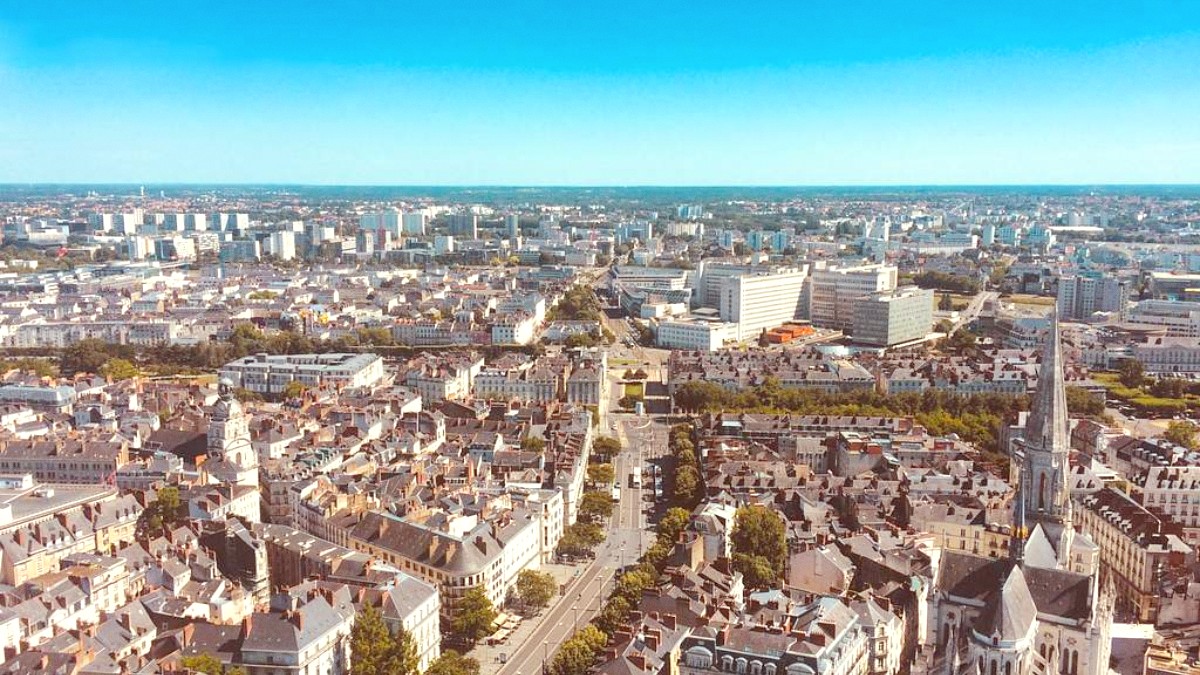
Southwestern France, France
Trams: Nantes has three tram lines (T1, T2, T3). They form the backbone of the city's public transport, offering fast and reliable service to various areas. Trams are modern, accessible, and generally run frequently.
Busway (Line 4): This is a dedicated bus rapid transit line that operates like a tram on its own separate lanes, offering high frequency and speed. It connects the city center (Foch-Cathédrale) to the southeastern suburbs.
Route maps are available at tram and bus stops, on board vehicles, and on the official TAN website (tan.fr).
Commerce: The central hub where all three tram lines intersect. Gare de Nantes: Main train station, connected to tram line 1. Bouffay: Historic district, significant tram and bus stop.
Nantes' public transport system made efforts toward accessibility. Trams and most newer buses are low-floor and feature ramps. Tram stops and bus shelters are designed with accessibility in mind. Navibus shuttles are generally accessible.
Download the official TAN app for real-time schedules, route planners, and maps.
Many central attractions are within walking distance of each other or major tram stops.
If visiting during summer, follow the green line painted on the pavement for "Le Voyage à Nantes" art trail.
Always validate your ticket immediately upon boarding a tram, bus, or Navibus. Failure can result in a fine.
Taxis and ride-sharing services present convenient, door-to-door transportation in Nantes, useful for late-night travel or when carrying luggage.
Download the app, set up your account, and request rides. Cashless payment and GPS tracking.
Formerly MyTaxi, operates in Nantes. Book licensed taxis or private hire vehicles.
Apps offer cashless payment for convenience.
Rental options present flexibility for exploring Nantes and its surroundings.
Less common for tourists. Some specialized shops might offer rentals. Requirements include a valid motorcycle license. These are for experienced riders.
For experienced riders only.
Nantes has a bicycle-friendly city with Bicloo, a public bike-sharing system. Stations are widespread. Short-term passes (1-day, 7-day) are available. The first 30 minutes of each ride are often free with a subscription.
Excellent for city exploration.
Several private shops offer daily or weekly bicycle rentals, including electric bikes (VAE). Examples: "Detours de Loire" and "Le Pignon Voyageur." These often provide higher quality bikes and helmets.
Higher quality bikes available.
Nantes is a city suited for exploration on foot or by bicycle, offering enjoyable ways to discover its charms.
Nantes has a growing and increasingly comprehensive network of dedicated bike lanes ("pistes cyclables") and shared paths ("voies vertes").
Always use designated bike lanes when available. Be aware of trams: tracks can be slippery, and bike wheels can get caught. Cross tracks at a perpendicular angle.
No strict "no-go" areas. Exercise general caution in less-trafficked industrial zones or very quiet residential areas late at night. The area immediately surrounding the train station (Gare de Nantes) can be busy and less welcoming after dark, but is not inherently dangerous.
For an unique and scenic commute, use the Navibus from Gare Maritime to Trentemoult. It is part of the regular public transport system and offers great river views.
The Grand Éléphant at Les Machines de l'île presents an attraction ride rather than a mode of public transport, yet it gives riders a panoramic view.